The Harvard MRSEC provides a vibrant culture of entrepreneurship and several recent Ph.D. students supported by Center IRGs and seed projects have co-founded new companies.

The Harvard MRSEC provides a vibrant culture of entrepreneurship and several recent Ph.D. students supported by Center IRGs and seed projects have co-founded new companies.
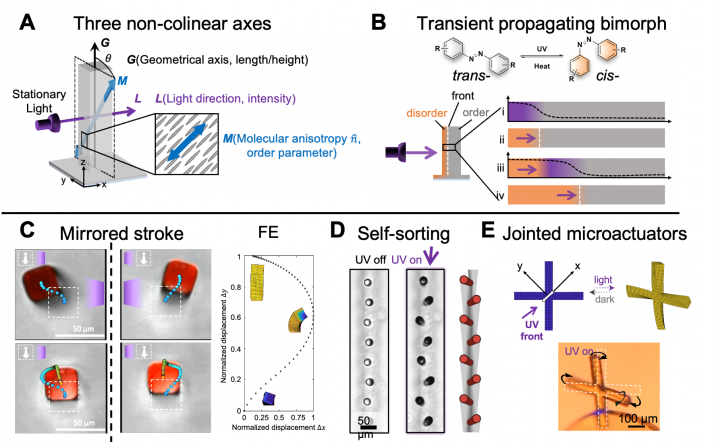
A team at the Harvard MRSEC led by Bertoldi and Aizenberg has developed an approach to achieve a diverse trajectories from a single-material system via self-regulation: when a photoresponsive liquid crystal elastomeric pillar with mesogen alignment is exposed to light, it ‘dances’ dynamically as light initiates a traveling order-to-disorder transition front that twists and bends via opto-chemo-mechanical feedback.

UD CHARM and Princeton’s PCCM coordinated with the Chicago MRSEC to host three virtual events (Soft Matter for All, Rising Stars, and a Professional Development Workshop) to highlight early career, high-impact research and ignite discussion for graduate students and postdocs pursuing academic and non-academic career paths.
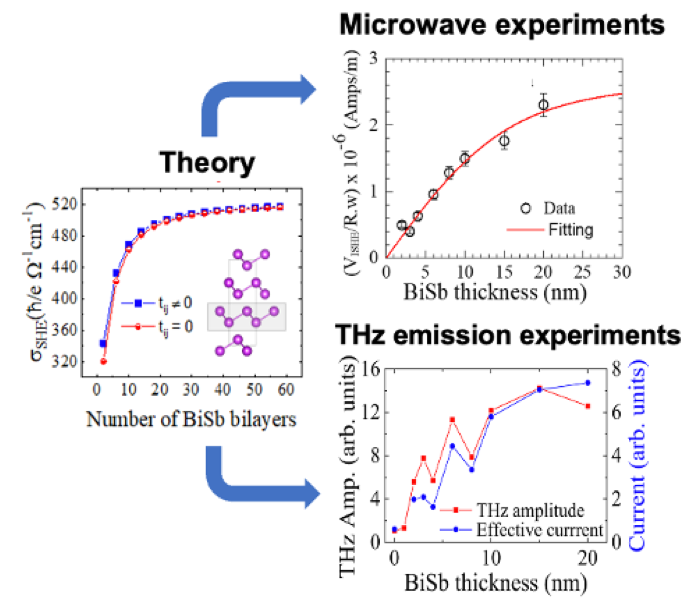
Experimental studies combined with theoretical calculations of spin dynamics across a wide frequency range from ~10 GHz to several THz in a novel amorphous ferromagnet (FM)/3D topological insulator (TI) (FeGaB/BiSb) system that is scalable and provides a promising platform for spin-electronic devices.
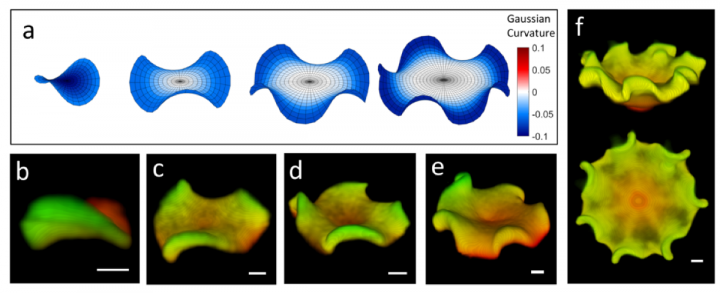
Producing self-assembled structures of prescribed limited size and shape is a major challenge in nanoscience. A major achievement of the MRSEC was to elucidate a new chirality-based mechanism that leads to self-limiting assembly of colloidal rafts.
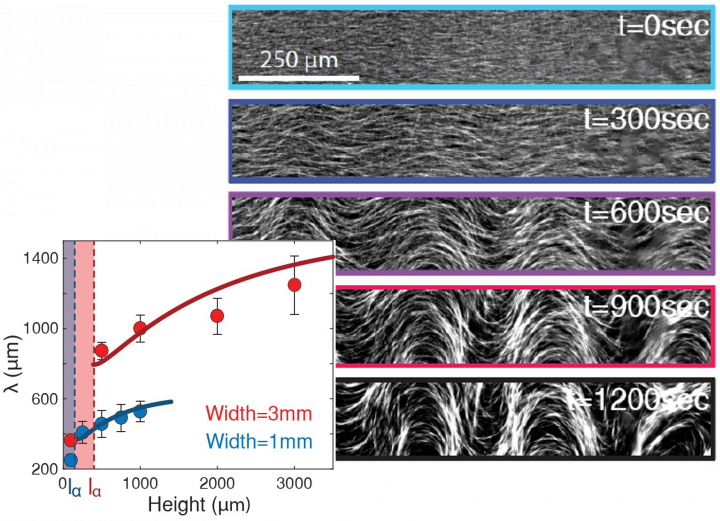
Here, three IRG2 PP developed a combination of experiments with 3D active fluids confined in microfluidic channels and a minimal hydrodynamic model to show that size of the channel determines the emergent lengthscale of the growing deformations. These findings will advance our understanding of active nemato-hydrodynamics and the pathways to 3D active turbulence at low Reynolds number.
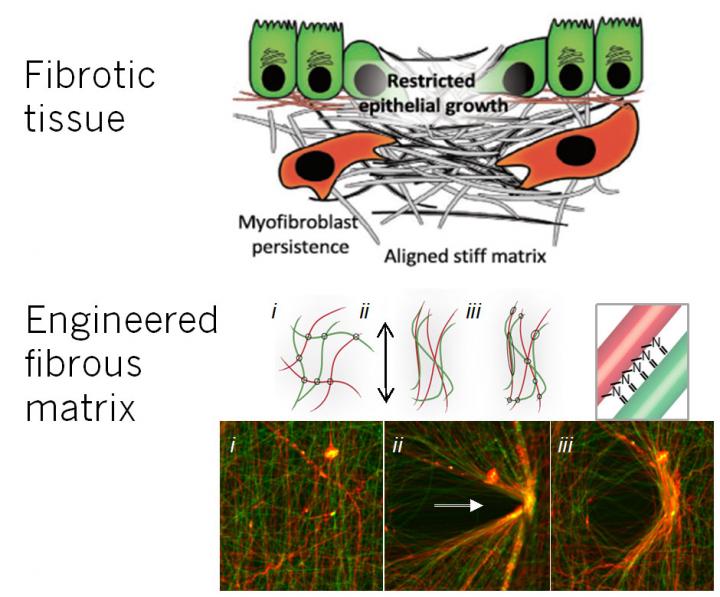
Animal tissues are composed of cells attached to either the surface of a fibrous network called a basement membrane or embedded within a 3D extracellular or interstitial matrix. As the disease liver fibrosis progresses, the extracellular fibrous networks become denser and more aligned. These physical changes lead to different mechanical properties and structures to which cells are exquisitely sensitive. To better understand the pathological effects of these changes during fibrosis on cells, we have engineered material platforms that mimic the extracellular matrix in tissue health and disease. As an example, we have fabricated fibrous materials that have varied mechanical properties and fiber densities when mechanically loaded due to the chemical adhesion between fibers, similar to natural extracellular matrix (see Figure).
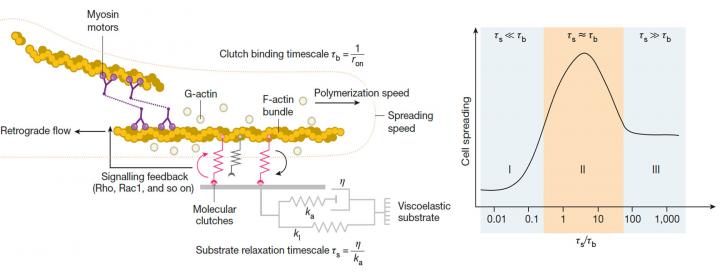
Linearly elastic elastomers coated with matrix proteins are widely used to assess the role of stiffness. Such experiments are often assumed to reproduce the effect of the mechanical environment experienced by cells in vivo. However, tissues and the extracellular matrix (ECM) are not linearly elastic materials. They exhibit far more complex mechanical behaviors. These behaviors include viscoelasticity, as well as mechanical plasticity, and nonlinear elasticity. Our theoretical and experimental work has revealed that matrix viscoelasticity regulates fundamental cell processes and can promote behaviors – such as proliferation, motility and spreading – that are not observed with elastic hydrogels in both two- and three-dimensional culture microenvironments.
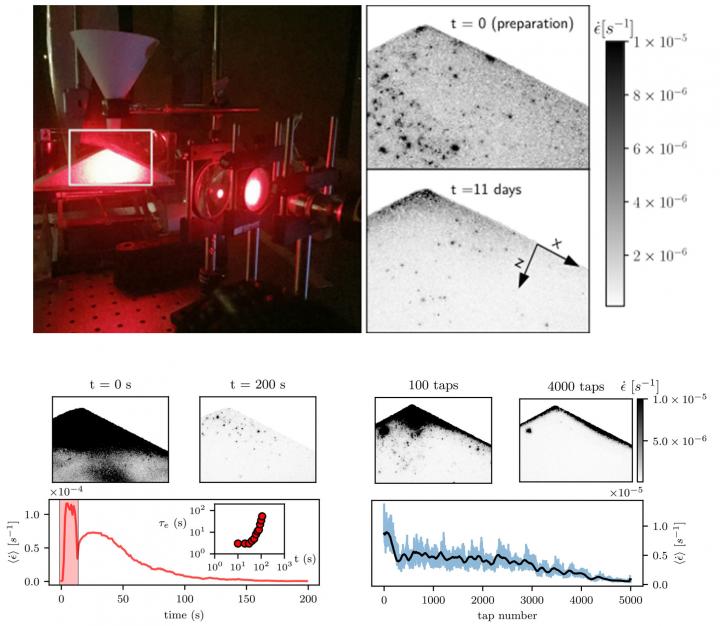
Soil is a highly disordered granular material. Slow soil deformation (creep) controls the shape of hills in the natural landscape, and is a precursor of catastrophic landsliding. Our work demonstrates a surprising observation: an apparently static sandpile, sitting on a table, is actually alive with motion. We study a 3D granular heap, confined by walls and prepared by pouring. Via Diffusive Wave Spectroscopy (DWS), we observe the existence of spatially-heterogeneous micro-deformations that decay in size and frequency as time progresses but persist up to 11 days after the preparation of the system; the heap relaxes. We find that this relaxation can be enhanced (overaged) or reversed (rejuvenated) by tuning the types of disturbances applied to system.
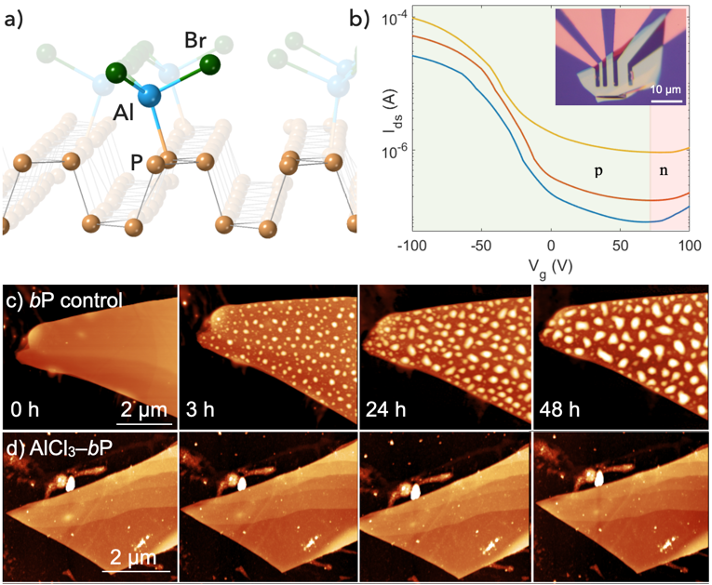
We have developed a solution-phase protocol to modify the Lewis basic surface of few-layer black phosphorus (bP) using commercially available Lewis acids, and demonstrated its effectiveness at providing outstanding ambient stability and tuning of electronic properties.